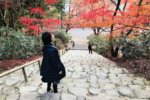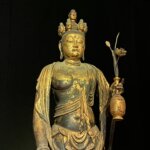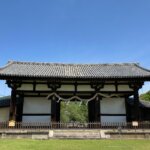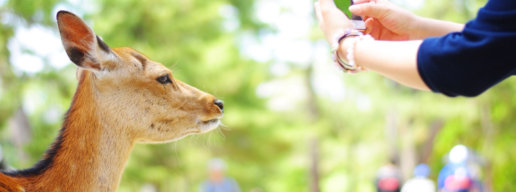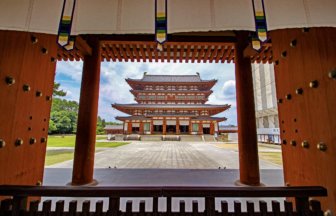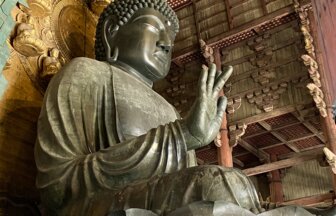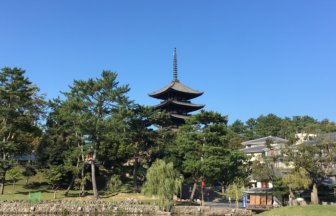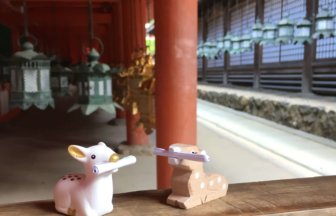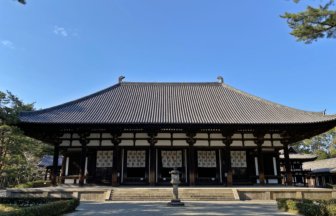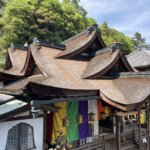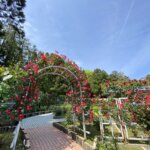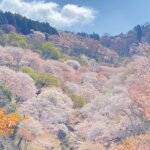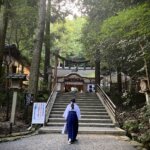Mount Yoshino (Yoshino-yama) is undoubtedly one of the most popular cherry blossom viewing spots in Japan, where the mountain slopes are covered with about 30,000 cherry trees. During the season, visitors are overwhelmed by the spectacular scenery that cannot be seen in any other part of the world.
The town of Yoshino is located in the mountains, far from the centers of Nara and Osaka. Even for people who live in Japan, it is a little mysterious place and many of them wish to visit it at least once in their life. Enjoying the cherry blossoms in full bloom in Yoshino is a mission that requires overcoming three conditions: distance, weather and the timing of the blossoms. It may seem difficult, but the challenge is worth it!
Mountain of Shugendo
Mount Yoshino is a sacred site of Shugendo. The entire mountain constitutes the World Heritage Site “Sacred Sites and Pilgrimage Routes in the Kii Mountain Range.”
Shugendo is an ancient mountain worship in Japan that incorporates Buddhism, Taoism and other religions. The goal of Shugendo is to achieve enlightenment through religious practices in the mountains. When En no Gyoja, who is said to be the founder of Shugendo, had religious practices on Mount Yoshino, he carved statues of Zao Gongen out of the cherry tree and housed them in two shrines. Based on this anecdote, believers regarded cherry trees as sacred and continued to dedicate and plant them for more than 1,000 years. This is how the landscape of Yoshino, as we know it today, was created.
Cherry Blossoms in Yoshino
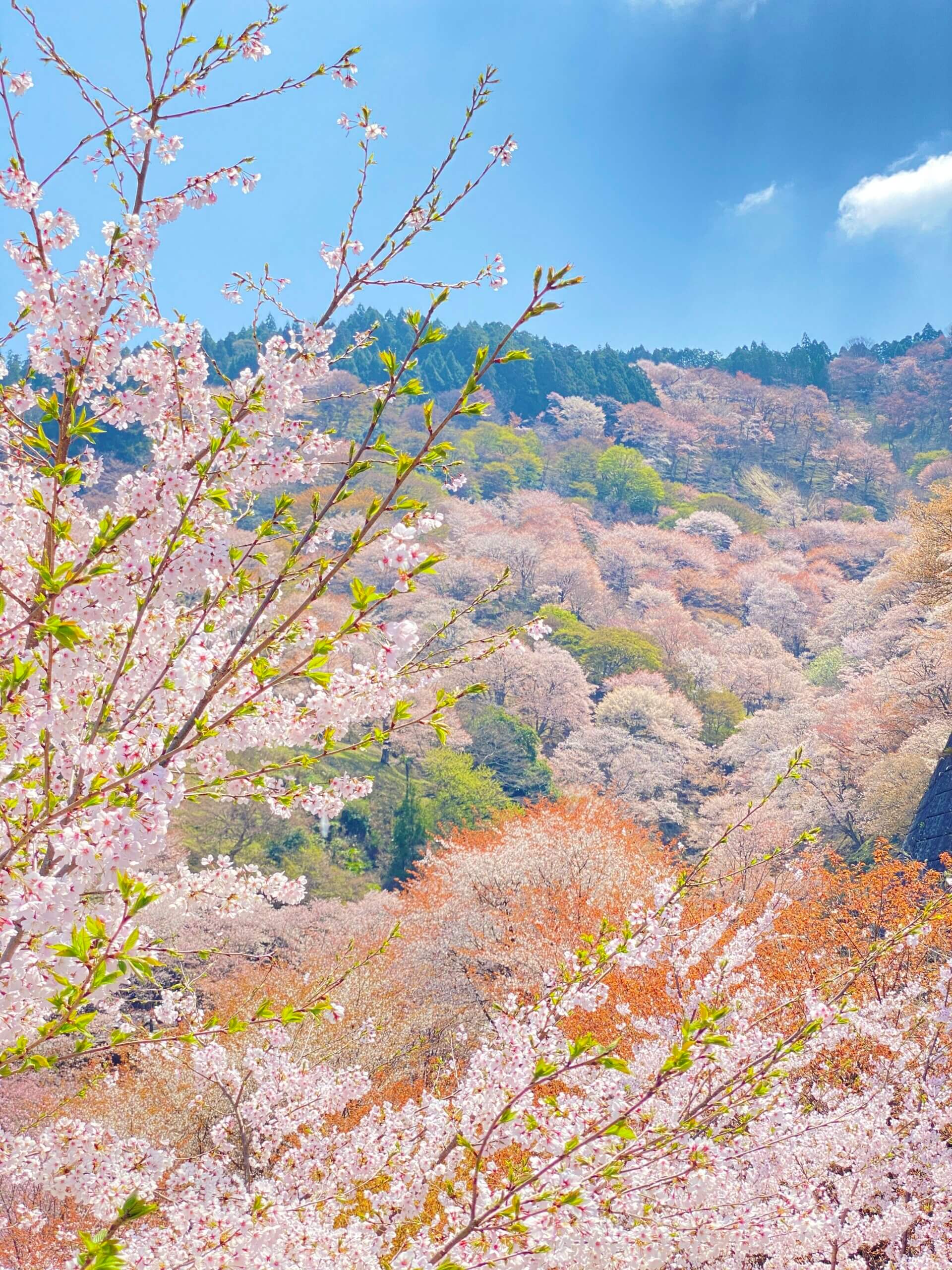
One of the things that make Yoshino’s cherry blossom different from others is its species. The species most commonly seen throughout Japan is Someiyoshino. The color of the flowers is whitish, which makes the landscape whitish as well. On the other hand, most of the cherry trees in Yoshino are Shiroyamazakura. When these cherry trees blossom, coral-colored leaves also grow, breaking the monotony of color and adding rhythm and depth to the landscape.
Another difference is the way you enjoy it. Of course, as you do with Someiyoshino, you can view the blossoms from nearby or take a walk under the trees. However, the highlight of this trip is viewing thousands of cherry trees and their blossoms covering the hillside from a distance.
Cherry trees in Yoshino generally bloom a little later than in surrounding areas. Since the flowers begin to bloom at the foot of the mountain and gradually climb up the hillside, the period during which we can enjoy the blossoms somewhere in the area is longer than in other destinations.
Yoshino is roughly divided into four areas according to altitude, which are called Shimo-Senbon, Naka-Senbon, Kami-Senbon and Oku-Senbon. Shimo, Naka, Kami and Oku mean lower, middle, upper and top, respectively. Senbon means a thousand trees.

As the cherry blossom season approaches, the Japan Meteorological Agency and other organizations release blossom forecasts. Keep an eye on them when making travel plans.
https://tenki.jp/sakura/6/32/6410/29441/
(Sakura forecast in 2024 by Japan Meteorological Agency. Japanese only.)
Recommended One-Day Plan
During the season, there is a frequent bus service from Yoshino Station to the Naka-Senbon bus stop. It is recommended that you take this bus. From Naka-Senbon, you will go down the hill, stopping by sightseeing spots, and then return to Yoshino Station.
Choose the Full Screen mode.
A. Naka-Senbon bus stop
↓
B. Scenic Viewpoint 1
↓
C. Chikurin-in
↓
D. Sakuramotobo
↓
E. Scenic Viewpoint 2: Hitome Senbon from Yoshimizu Shrine
↓
F. Yoshimizu Shrine
↓
G. Kinpusen-ji Temple
↓
H. Nanamagari Slope
↓
I. Yoshino Station
B. Scenic Viewpoint 1

After getting off the bus at the Naka-Senbon bus stop, go back the way you came and go through the tunnel. You will find a small hut by the road. Look up the mountain from there and you will find the view in the photo above.
C. Chikurin-in
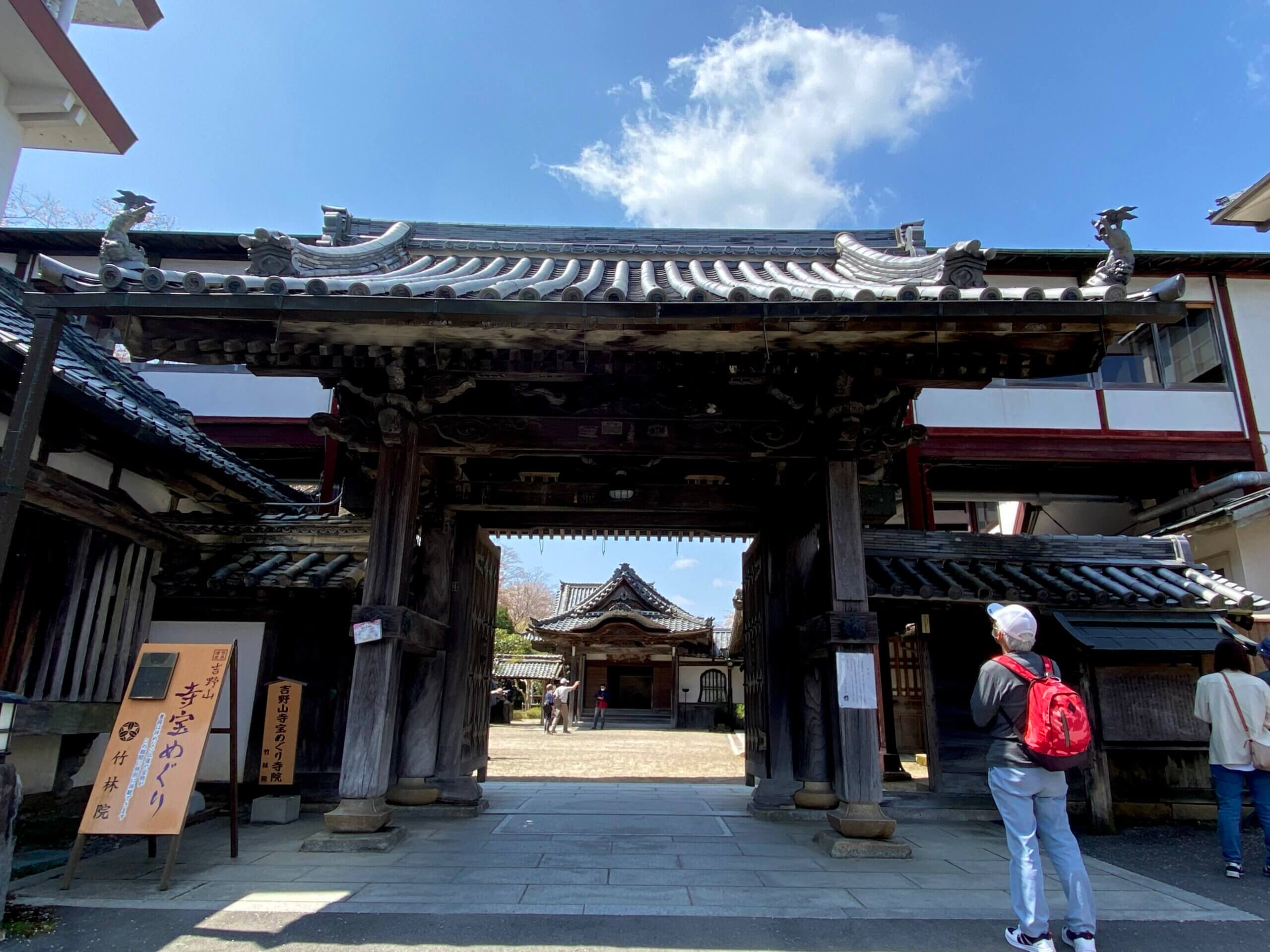
This is a Shugendo temple with a traditional high-class Japanese-style inn. Its large Japanese garden is open to the public. It is said to be one of the three best gardens in Nara and is famous for its beautiful weeping cherry trees that bloom in the spring.
http://www.chikurin.co.jp/teien.php
(Official website of the garden. Japanese only.)
D. Sakuramotobo
A Shugendo temple. A statue of En no Gyoja, who is said to be the founder of Shugendo, is enshrined as the principal image in the Main Hall. The Meditation Hall (Daikodo) is a large Japanese-style room for meditation. The view of Kami-Senbon through the large windows surrounding the room is magnificent.
View from the Meditation Hall of Sakuramotobou
E. Scenic viewpoint 2: Hitome Senbon from Yoshimizu Shrine
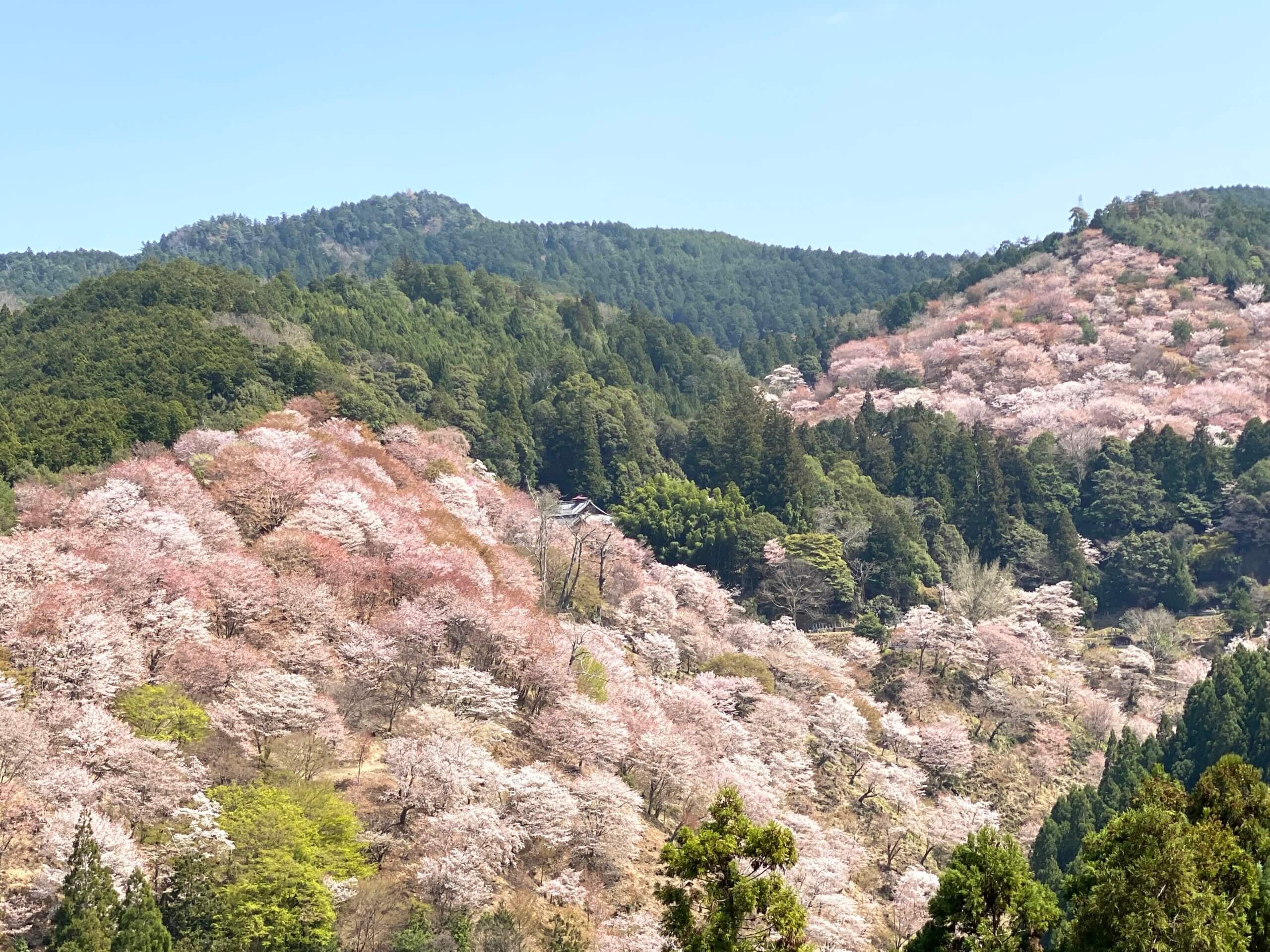
To get to Yoshimizu Shrine, look at the map carefully and take a side road off the main street. Go through the first gate and turn right, and you will find an open space from where you can enjoy the most beautiful view of Yoshino. The view is called Hitome Senbon, which means that you can see a thousand cherry trees at a glance. In actuality, however, you will see more than a thousand cherry trees on the slopes of the mountains.
F. Yoshimizu Shrine

Originally a residence for Shugendo monks, it later became a Shinto shrine following the Meiji Government’s policy of separating Shinto and Buddhism. Its Shoin building is a representative masterpiece of early Shoin-style architecture, which is an Important Cultural Property and has been inscribed on the World Heritage List. It has played an important role in Japanese history many times and its traces can be seen here and there in the building.
G. Kinpusen-ji Temple

A large temple representing Yoshino. En no Gyoja, who is said to have founded Shugendo, carved statues of Zao Gongen and built two shrines to house them. One of the shrines is said to be the origin of the Zao-do (Main Hall) and it marked the beginning of the history of Kinpusen-ji Temple. It is still the central place for Shugendo where many monks come to practice asceticism.
Zao-do (Main Hall) (National Treasure)
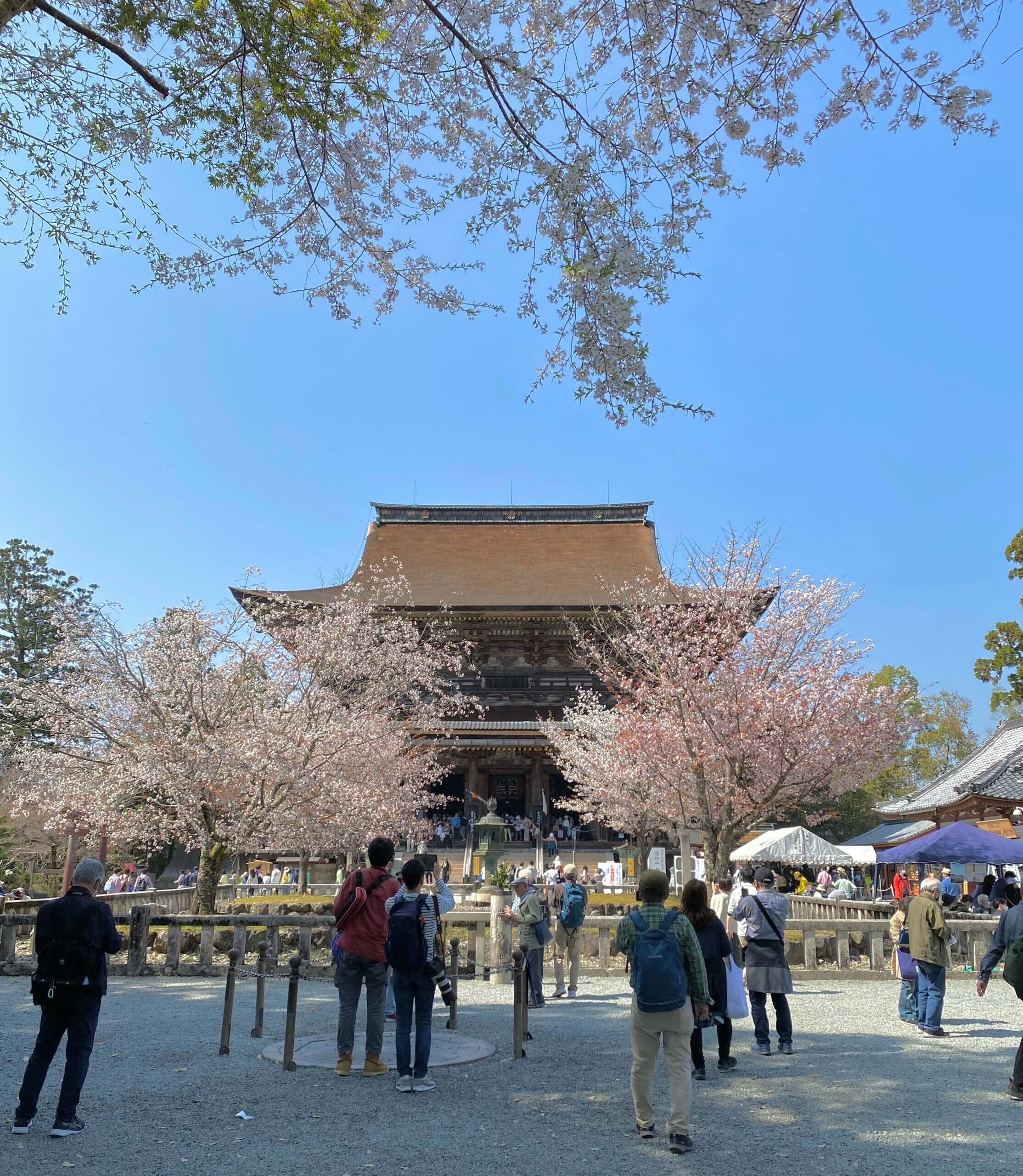
This large building, 34 meters high, is the Main Hall of Kinpusen-ji Temple and houses a number of statues including the three principal images of Zao Gongen. These are hidden statues and open to the public only during limited times of the year including the cherry blossom season. If you visit Yoshino during this season, it is recommended that you enter the hall to see them. They are known as “giant blue statues” and the tallest one in the center is about 7 meters high. Visitors can look up at them from a short distance and be overwhelmed. The real statues are much more impressive than the photo.
Nio-mon Gate (National Treasure)
The Gate is currently undergoing restoration, which is scheduled to last until about 2028, and is completely hidden by a temporary roof and walls. Two 5-meter-tall Kongorikishi (Nio) statues, originally placed on either side of the Gate, are now exhibited at the Nara National Museum.

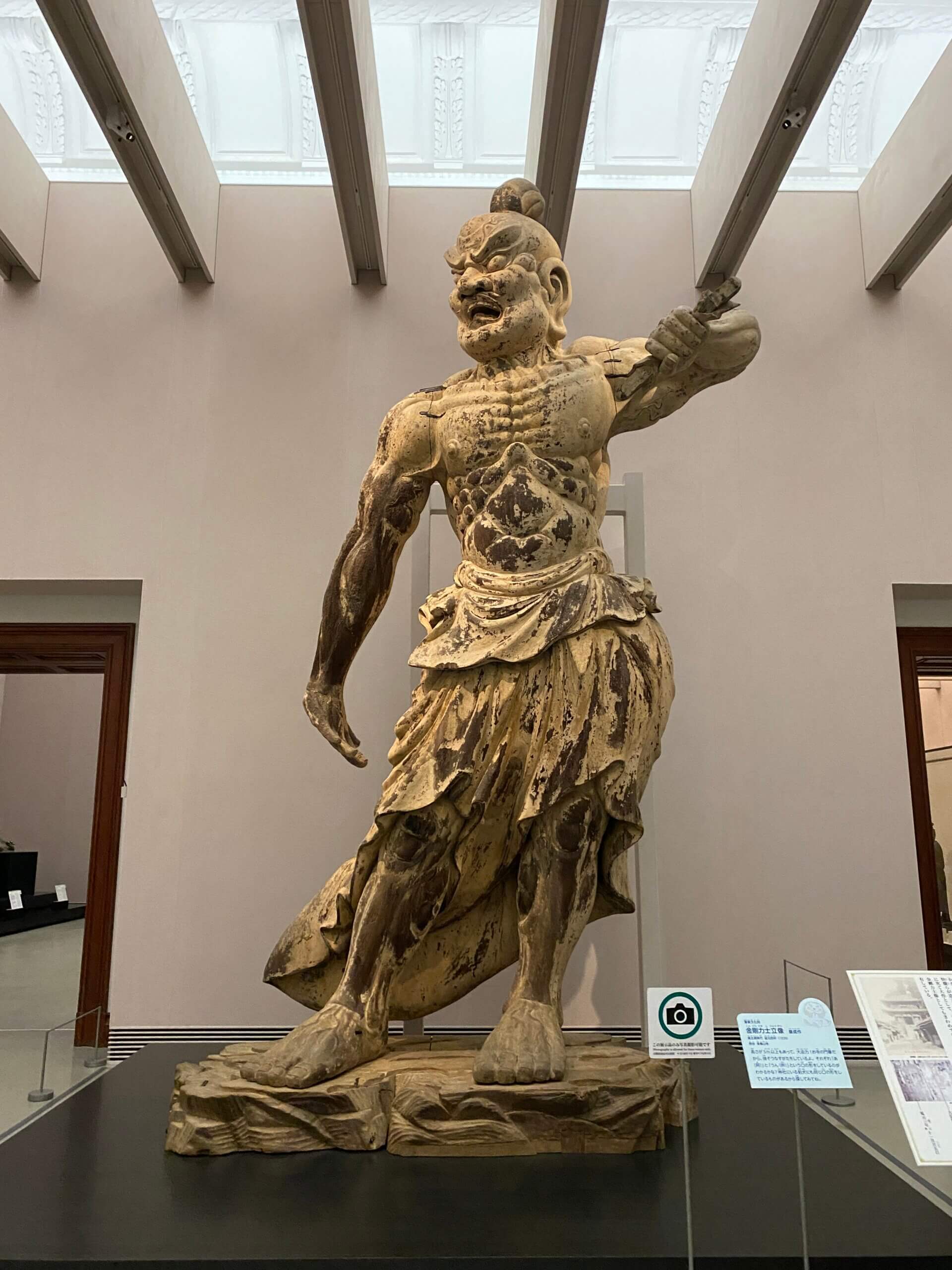
Statues temporarily exhibited at the Nara National Museum
I. Nanamagari Slope
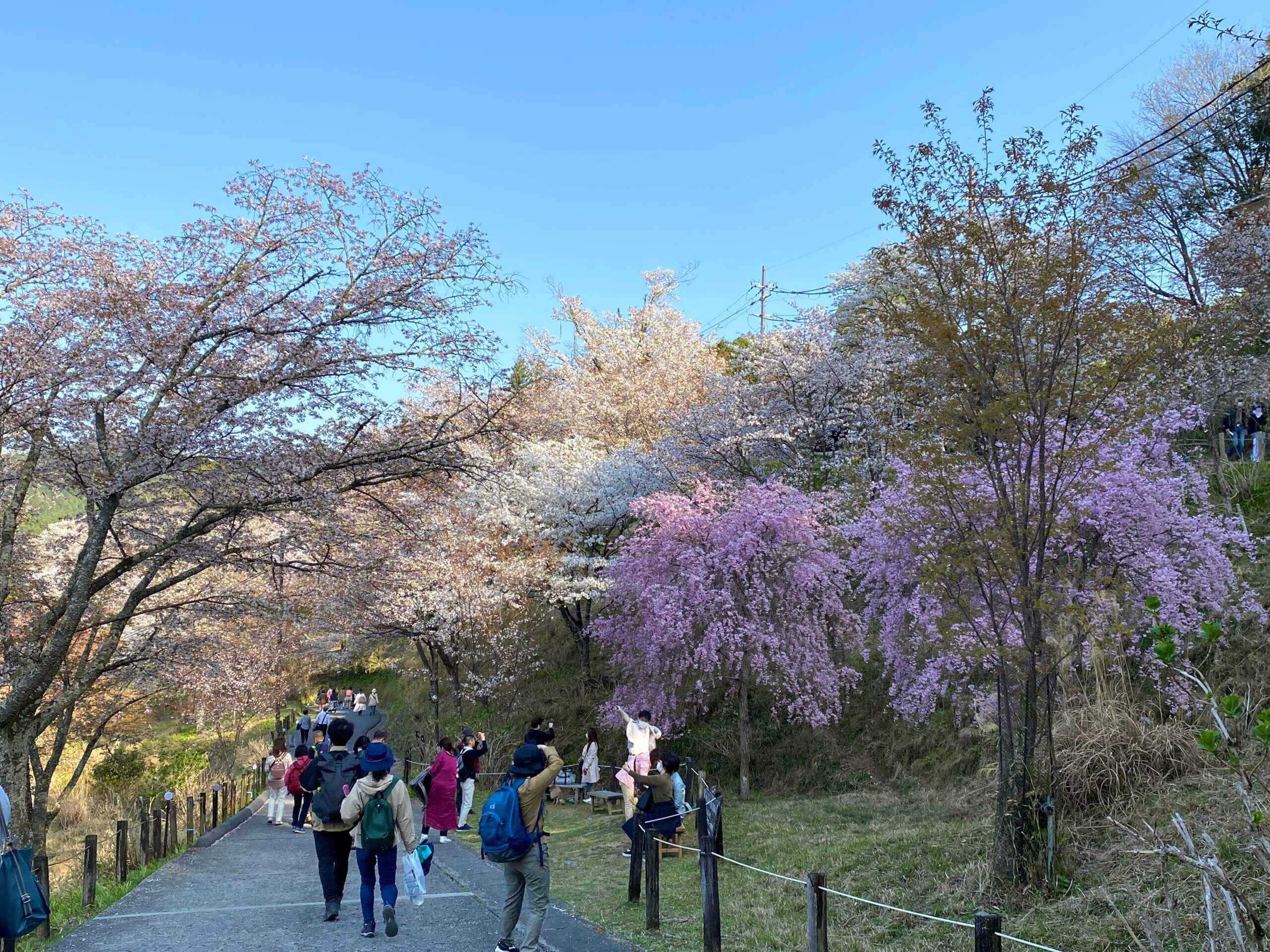
Cherry blossoms bloom on both sides of this winding, sloping road. Visitors can enjoy a stroll under the blossoms. This is where cherry blossoms begin to bloom at the earliest time in the Yoshino area.
OPTIONS
- Oku-senbon is at the highest elevation in the area and it is said that cherry blossoms are still in bloom even after they have fallen at lower elevations. However, even from the last bus stop, you have to walk a considerable distance along a steep trail. Old trees have been cut down and newly planted trees are few and still small. If you only want to see the cherry blossoms, a visit is not recommended. Still, it is a good trail for hiking. Visitors can walk there from Naka-senbon, although it is a long walk, without using a bus service.
- Alternatively, it is a good idea to walk from Naka-senbon to the Hanayagura Observatory and the Yoshino Mikumari Shrine in Kami-senbon.
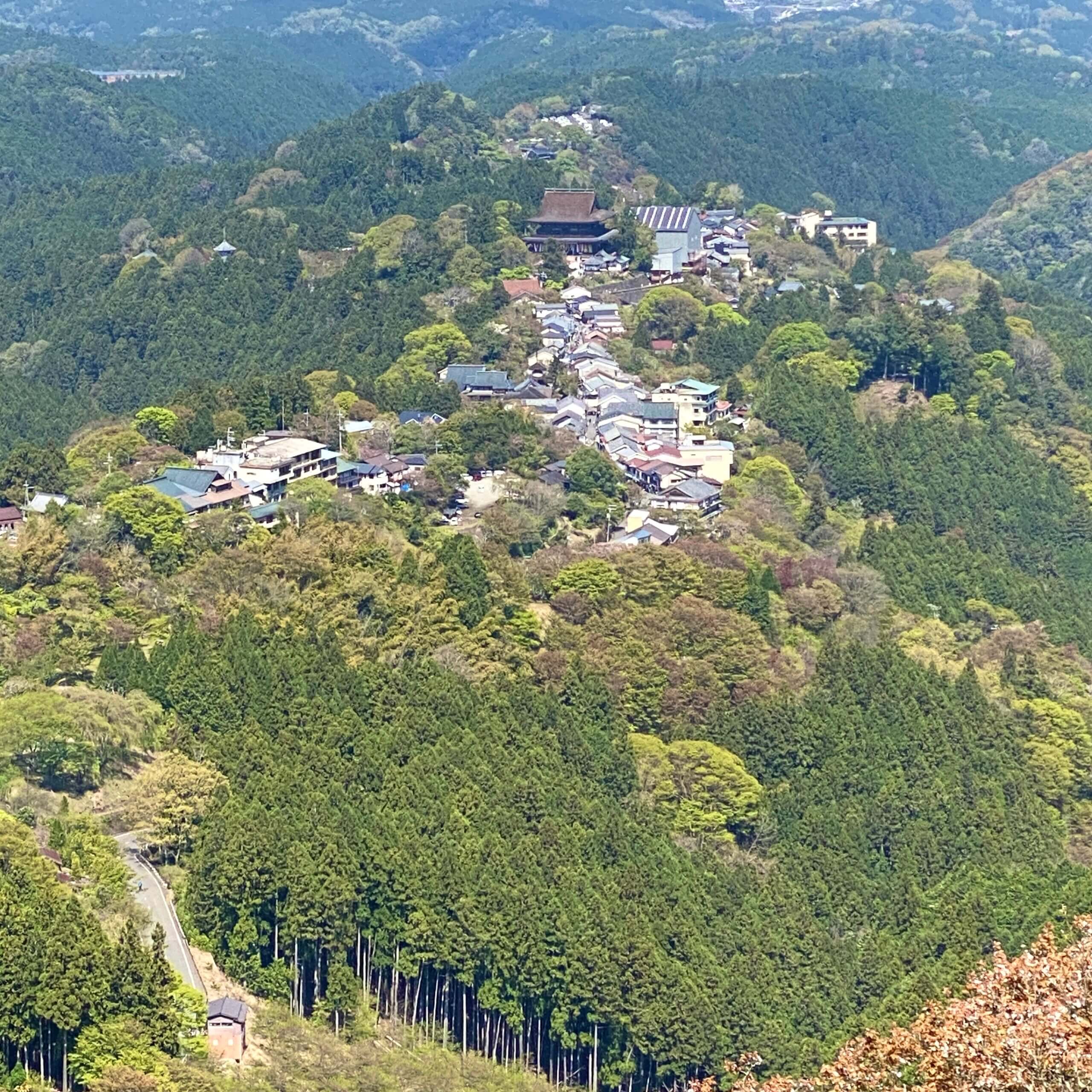
View from Hanayagura Observatory on April 9, 2023. Most of the cherry blossoms have fallen by this time.
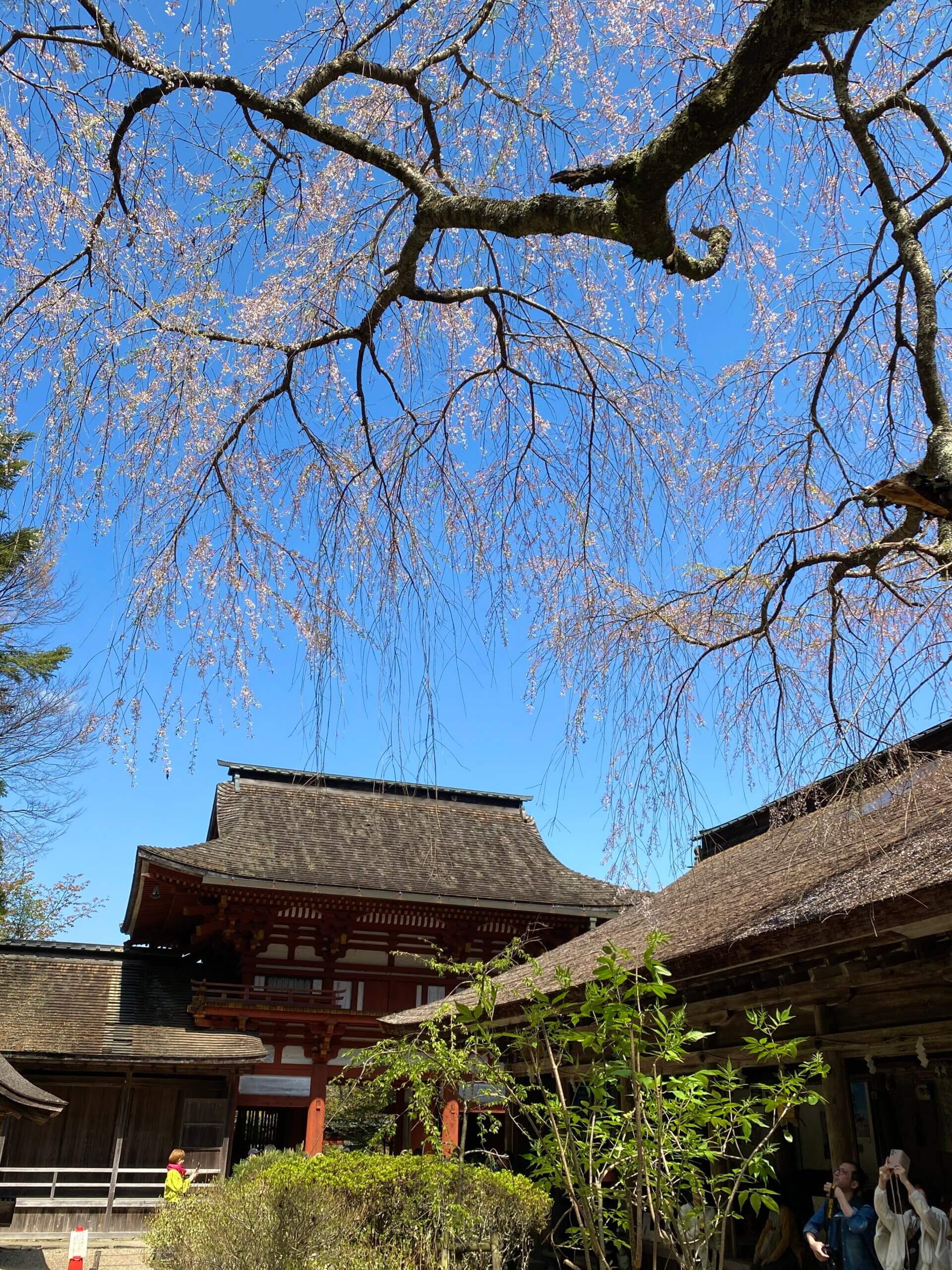
Yoshino Mikumari Shrine on April 9, 2023
Information:
Kinpusen-ji Temple
Free admission and access at all times, except for the Zao-do Hall.
Zao-do (Main Hall)
Hours: 8:30 to 16:00
Admission: Adult 800 yen (except the special exhibition periods)
Adult 1,600 yen (during the special exhibition periods)
Address: 2498 Yoshinoyama, Yoshino-cho, Yoshino-gun, Nara Prefecture
Official website (English):
https://www.kinpusen.or.jp/english/
Yoshimizu Shrine
Hours: 9:00 to 17:00 (* Enter 30 minutes before closing.)
Admission: Adult 600 yen
Address: 579 Yoshinoyama, Yoshino-cho, Yoshino-gun, Nara Prefecture
Official website (Japanese only):
http://www.yoshimizu-shrine.com/
Chikurin-in (Garden)
Hours: Around 8:00 to sunset
Admission to the garden: Adult 400 yen
Address: 2142 Yoshinoyama, Yoshino-cho, Yoshino-gun, Nara Prefecture
Official website of the garden (Japanese only):
http://www.chikurin.co.jp/teien.php
Sakuramotobo
Hours: 8:30 to 16:00
Admission: Adult 500 yen (except the special exhibition periods)
Adult 800 yen (during the special exhibition periods)
Address: 1269 Yoshinoyama, Yoshino-cho, Yoshino-gun, Nara Prefecture
Official website (Japanese only):
https://sakuramotobou.or.jp/
Yoshino Mikumari Shrine
Hours: 8:00 to 16:00 (8:00 to 17:00 in April)
Admission: Free
Address: 1612 Yoshinoyama, Yoshino-cho, Yoshino-gun, Nara Prefecture
Official Nara Prefecture website (Japanese only):
http://yamatoji.nara-kankou.or.jp/01shaji/01jinja/04south_area/yoshinomikumarijinja/
Access:
Take the Kintetsu Yoshino Line and get off at Yoshino Station (not Yoshino-guchi Station). During the cherry blossom season, it is recommended to make a round-trip reservation on limited express trains between Osaka Abenobashi Station and Yoshino.
From Nara and Kyoto, transfer to the Kintetsu Yoshino Line at Kashihara Jingu-mae Station.
From Yoshino Station, there are three means of transportation: walking, ropeway and bus. It is recommended to take a bus to Naka-Senbon, as buses run very frequently during the season.

The pin on the map shows Kinpusen-ji Temple.
* All photos taken on April 8, 2022, except for those that are specifically dated.
Last updated: February 3, 2024
Text by: Yumi